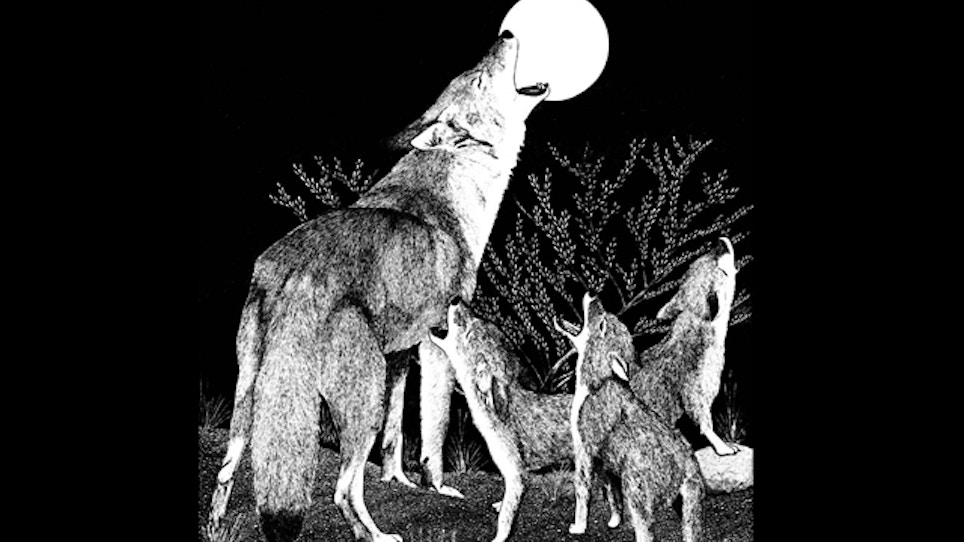By AMY WOLD | The Advocate
BATON ROUGE, La. (AP) — A coyote's howls on the prairie of a Western movie can help set the atmosphere as much as a Saguaro cactus or desert mountains, but to hear the animal's call in an urban backyard such as a Baton Rouge subdivision can be unnerving.
Homeowners in Iberville Terrace subdivision near Bluebonnet Boulevard and Perkins Road received notices on their mailboxes Wednesday evening warning of a pack of coyotes living in the woods between their neighborhood and Lakeside subdivision.
The coyote sightings raised concerns among residents about personal safety and the well-being of small pets, but experts say people have little to fear.
The sightings and reports of disappearing cats, both stray and pets, prompted the hiring of a trapper to try to capture and relocate the coyotes to somewhere less urban.
Janet Rhodus, president of the Iberville Terrace Homeowners Association, said she became concerned after feral cats she had spayed and neutered started disappearing from the three sites where she was feeding them.
One of the cats was found injured, and a veterinarian said the injury looked like a fox or coyote attack.
“In the middle of the night, it sounds like hundreds (of coyotes),” she said.
As more construction keeps encroaching on the coyotes' habitat, she said, the problem will only get worse.
“The sightings are astonishing. Coyotes cross Highland Road nightly,” she wrote in an email. “This is a parish-wide problem and there should be a task force in place to address this issue in heavily populated areas.”
In the past year, she said, the neighborhood has had about 100 cats disappear.
“We're taking away their habitat, and they're starving to death,” Rhodus said of the coyotes.
Not exactly, said wildlife and animal control experts.
“No, they're not starving,” said Jim LaCour, state wildlife veterinarian at the Louisiana Department of Wildlife and Fisheries. “They can make a living just about anywhere.”
However, what coyotes will do is go for the easiest calories they can find, whether that's rodents, pet food left outside or a neighborhood cat.
“As far as personal safety, coyotes have attacked people, but it's extremely rare,” LaCour said. In the past decade, there has been only one attack documented in New York, and it was discovered later that it was in an area where people had been feeding the animal, which made it lose its fear of humans.
“Realistically, the risk to humans is minimal,” LaCour said.
The problem that would need to be reported immediately is if a coyote loses its fear of people and fails to run away when it encounters a person.
Henry Wimbley, superintendent of Alexandria Animal Control and president of the Louisiana Animal Control Association, agreed.
“I've worked many dog bites, but I've never worked a coyote attack, and I've been in this business for more than 20 years,” Wimbley said. “The facts kind of speak for themselves.”
Coyotes are so adaptable and can eat so many different types of things, from mice to berries, that there's no need for them to go into residential areas, Wimbley said.
If a coyote is coming into a residential area, that usually means there is something drawing it to the area.
“We think we're feeding the cat, but we're actually feeding coyotes,” Wimbley said.
In addition, sometimes coyotes get the blame for disappearing pets when there are other forces at work, including owls and disease.
“I wouldn't put it all on the coyotes,” Wimbley said.
Some of those tips include making sure garbage cans are secure, feeding pets inside and not outside and ensuring that small pets are watched carefully when they're outdoors.
“We've got to learn how to live with them,” Wimbley said. “If there's no reason to come (to a neighborhood), they'll stay in their own habitat.”
There have been a number of homeowners associations around the state that have hired professionals to trap nuisance coyotes, but it can be tough.
In addition, if a particular family unit is captured and relocated, it opens up that territory for another family unit to move in, he said. The coyotes usually live in a family unit, which can claim 300 to 400 acres.
Coyotes have been expanding all over the United States and into cities, said Don Reed, wildlife specialist with the LSU Agriculture Center. The secret of the animals' success is how adaptable they are to all kinds of habitats and food sources, and they can be active during the day or the evening, depending on what works best for their situation.
In Cook County, Illinois, there is an Urban Coyote Research Project that has been tracking city dwellers and has found coyotes living happily with most, not causing a problem, even in downtown Chicago.
However, keeping those problems at bay will mean people need to adjust their habits to keep food and the attraction to residential areas to a minimum.
___
Information from: The Advocate, http://theadvocate.com






